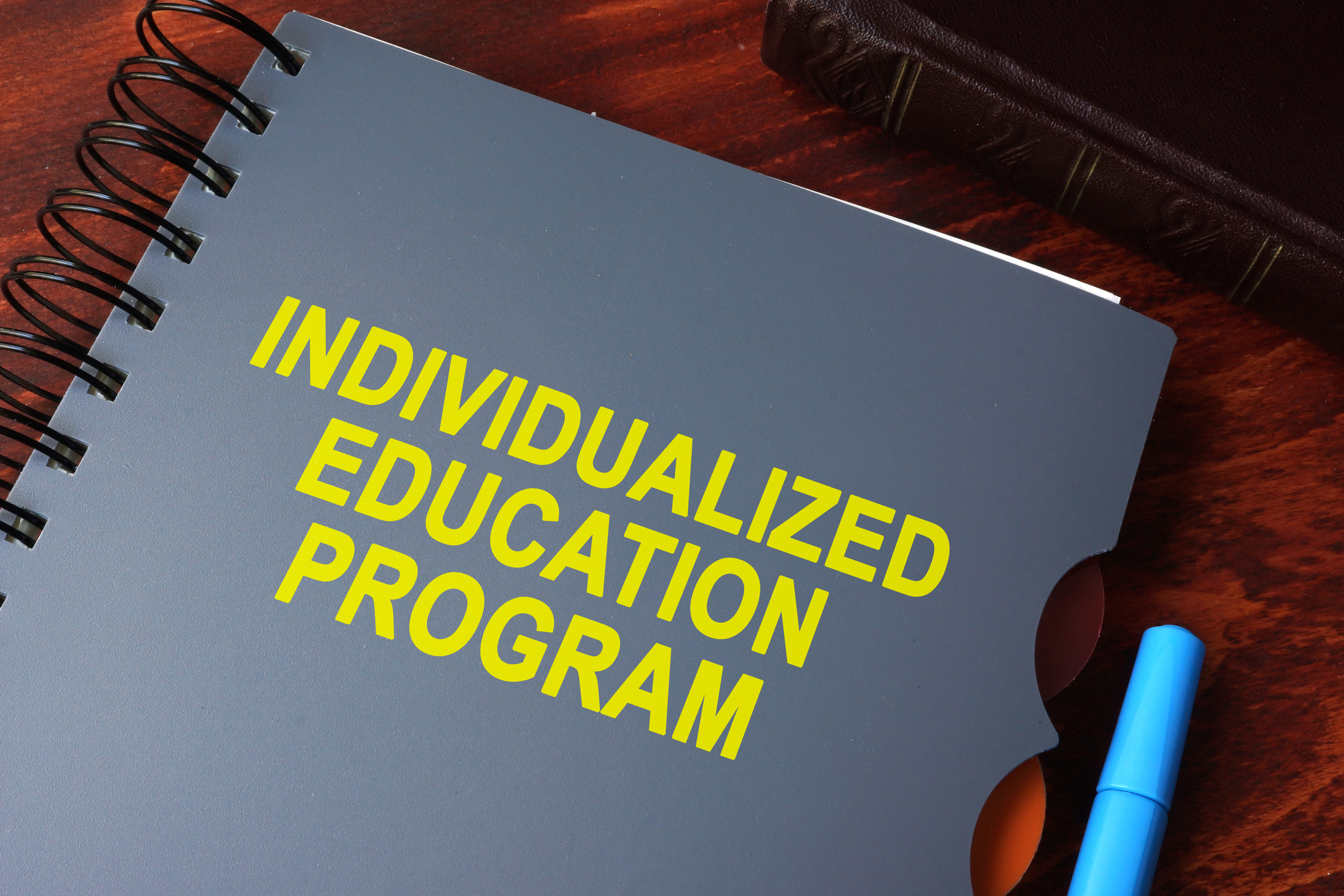How An Individualized Learning Program Can Help
When a student has some sort of a learning exceptionality or has a need for accommodations, they will usually have either an Individualized Education Plan (IEP) or a Section 504 Plan. These are two distinct sets of services governed by two distinct bodies of law. Our teacher-turned-attorney at the law office of Windsor Law LLC can provide the strategy and legal eye you may need to proactively advocate for your child. Call today.
Proactive Plans To Help A Student Learn
In Florida, a student can have both a 504 Plan as well as an IEP. However, when the student has both, the 504 Plan becomes a part of the IEP.
First, let’s understand what each plan is for and why they might need one or the other or both.
Individualized Education Plan (IEP)
An IEP is like a prescription for what the student needs in order to learn. It is specially designed instruction and related services provided at no cost to parents, to meet the unique needs of a child with a disability. It can include specialized activities in gym, music and arts education, and specialized instruction in the classroom, home or other settings.
The Individuals with Disabilities Education Act (IDEA) is a federal law for children with disabilities. This is the body of law that governs the development and delivery of an IEP.
How Does One Go About Obtaining An IEP For Their Child?
There are two requirements or two elements that must be satisfied in order for a student to obtain an IEP:
- A CHILD HAS ONE OR MORE OF THE 13 SPECIFIC DISABILITIES LISTED IN IDEA. LEARNING AND ATTENTION ISSUES MAY QUALIFY.
AND
- THE DISABILITY MUST AFFECT THE CHILD’S EDUCATIONAL PERFORMANCE AND/OR ABILITY TO LEARN AND BENEFIT FROM THE GENERAL EDUCATION CURRICULUM, LEADING TO THE NEED FOR SPECIALIZED INSTRUCTION
What Are The 13 Specific Disabilities Listed In IDEA?
1. Specific Learning Disability (SLD)
2. Other Health Impairment
This covers conditions that limit a child’s strength, energy or alertness.
- While it is more difficult to obtain an IEP when a child “merely” has ADHD, it is not impossible. They may qualify under Other Health Impaired (OHI).
3. Autism Spectrum Disorder (ASD)
ASD is a developmental disability. Today one in 60 children is diagnosed with some form of ASD as it covers a wide range of symptoms and skills.
But mostly it affects the child’s social and communication skills and often impacts behavior because of the frustration to the child of not being able to communicate effectively.

4. Emotional Disturbance
Children covered under the term “emotional disturbance” can have a number of mental disorders. They may include anxiety disorder, schizophrenia, bipolar disorder, obsessive-compulsive disorder and depression.(Some of these issues may also be covered under “other health impairment”).
5. Speech Or Language Impairment
The term “speech or language impairment” covers a broad array of communication problems, including stuttering, impaired articulation, language impairment or voice impairment.
6. Visual Impairment (Including Blindness)
A child who has vision problems is considered to have a visual impairment. This condition includes both partial sight and blindness. If eyewear can correct a vision problem, then it does not qualify.
7. Deafness
Children with a diagnosis of deafness have a severe hearing impairment. They are not able to process language through hearing.
8. Hearing Impairment
The term “hearing impairment” refers to a hearing loss not covered by the definition of deafness. This type of loss can change or fluctuate over time.
Remember that being hard of hearing is not the same thing as having auditory processing disorder.
9. Deaf-Blindness
Children with a diagnosis of deaf-blindness have both hearing and visual impairments. Their communication and other needs are so great that programs for the deaf or blind cannot meet them.
10. Orthopedic Impairment
Any impairment to a child’s body, no matter what the cause, is considered an orthopedic impairment.
11. Intellectual Disability
Children with this type of disability have below-average intellectual ability. They may also have poor communication, self-care and social skills. Down syndrome is one example of intellectual disability.
12. Traumatic Brain Injury
This is a brain injury caused by an accident or some kind of physical force.
13. Multiple Disabilities
A child with multiple disabilities has more than one condition covered by IDEA. Having multiple issues creates educational needs that cannot be met in a program for any one condition.
- THE DISABILITY MUST AFFECT THE CHILD’S EDUCATIONAL PERFORMANCE AND/OR ABILITY TO LEARN AND BENEFIT FROM THE GENERAL EDUCATION CURRICULUM, LEADING TO THE NEED FOR SPECIALIZED INSTRUCTION
This is really three elements and often this is where parents run into trouble:
1. Must affect the child’s educational performance and/or ability to learn – Ways to prove this are grades or performance on standardized tests.
2. Benefit from the general education curriculum – The law requires that we educate students with disabilities in the least restrictive environment. This is easy to prove in most cases.
3. Leading to the need for specialized instruction – This connects to the previous statement and is more difficult to prove. Often it is best proven by showing the difference in performance in the student with and without the specially designed instruction and related services.
A 504 Plan Explained

Generally, a 504 Plan deals more with accommodations and less with specially designed instruction. It is designed to level the playing field at the time the student is asked to prove their knowledge. It sometimes has more to do with access than with instruction. It provides services and changes to the learning environment to meet the needs of the child as adequately as other students. Like an IEP, a 504 Plan is provided at no cost to the parents.
The term 504 Plan comes from Section 504 of the Rehabilitation act of 1973. It is a federal civil rights law to stop discrimination against persons with disabilities. The goal of Section 504 is to make sure that students with disabilities have access to, or can take part in, the general curriculum.
Like and IEP, to obtain a 504 Plan, there are two requirements or two elements that must be satisfied:
- A CHILD HAS ANY DISABILITY, WHICH CAN INCLUDE MANY LEARNING OR ATTENTION ISSUES
AND
- THE DISABILITY MUST INTERFERE WITH THE CHILD’S ABILITY TO LEARN IN A GENERAL EDUCATION CLASSROOM. SECTION 504 HAS A BROADER DEFINITION OF A DISABILITY THAN IDEA.
- It says a disability must substantially limit one or more basic life activities, such as learning
- That is why a child who does not qualify for an IEP might still be able to get a 504 plan
What Are Section 504 Disabilities?
Section 504 disabilities are often broader in scope than the 13 disabilities listed in the IDEA. To qualify as a disability, the disability must merely interfere with the child’s ability to learn in a general education classroom.
To prove the existence of the disability, it must substantially limit one or more basic life activities, such as learning.
Again, these are three elements to prove:
- Interfere with the child’s ability to learn in a general education classroom
- Substantially limit one or more
- Basic life activities
An accommodation is a change in how or where your child is taught or the materials used for teaching. Accommodations can help kids who are struggling to work around their weaknesses. For instance, kids who have trouble writing may be allowed to answer test questions orally. Even with accommodations, kids are expected to learn the same content as their peers.
In summary, an IEP is a very specific plan that specifies learning goals for a student based on present levels of performance with specific services that will be provided to help the student advance academically, socially or emotionally. It is a written document that is drafted by many members of a team that must include:
- The child’s parent
- At least one of the child’s general education teachers
- At least one special education teacher
- School psychologist or another specialist who can interpret evaluation results
- A district representative with authority over special education services
With few exceptions, every member of the team must be present
The specific accommodations, supports or services for the child with a 504, there is no standard plan. Unlike an IEP, a 504 Plan does not have to be a written plan. A 504 plan just generally includes:
- Names of who will provide each service
- The name of the person responsible for ensuring the plan is implemented
Like an IEP, a 504 Plan is also created by a team of people who are familiar with the child and who understand the evaluation data and special services options. This might include:

- The child’s parent
- General and special education teachers
- The school principal
Many things will go into determining whether an IEP or a 504 Plan is best for your child. The most important thing in determining the best plan is to know what a student can and cannot do through a complete neuro-psych evaluation as well as a full records review by a qualified professional.
In conclusion, there are many differences between an IEP and a 504 Plan. Determining which one is right for a student is a complex analysis that considers the student’s disabilities and abilities and the setting in which they will best learn as well as the assessment setting where they can best demonstrate their abilities.
When Your Child Needs Help Learning, We Can Seek A Solution
At Windsor Law LLC, our assertive, caring attorney knows how the law works as well as the educational system because she was a teacher before attending law school. She can be your closest ally in the fight to help your child learn. Email the office today or phone us at 941-487-7527 to request an appointment.
